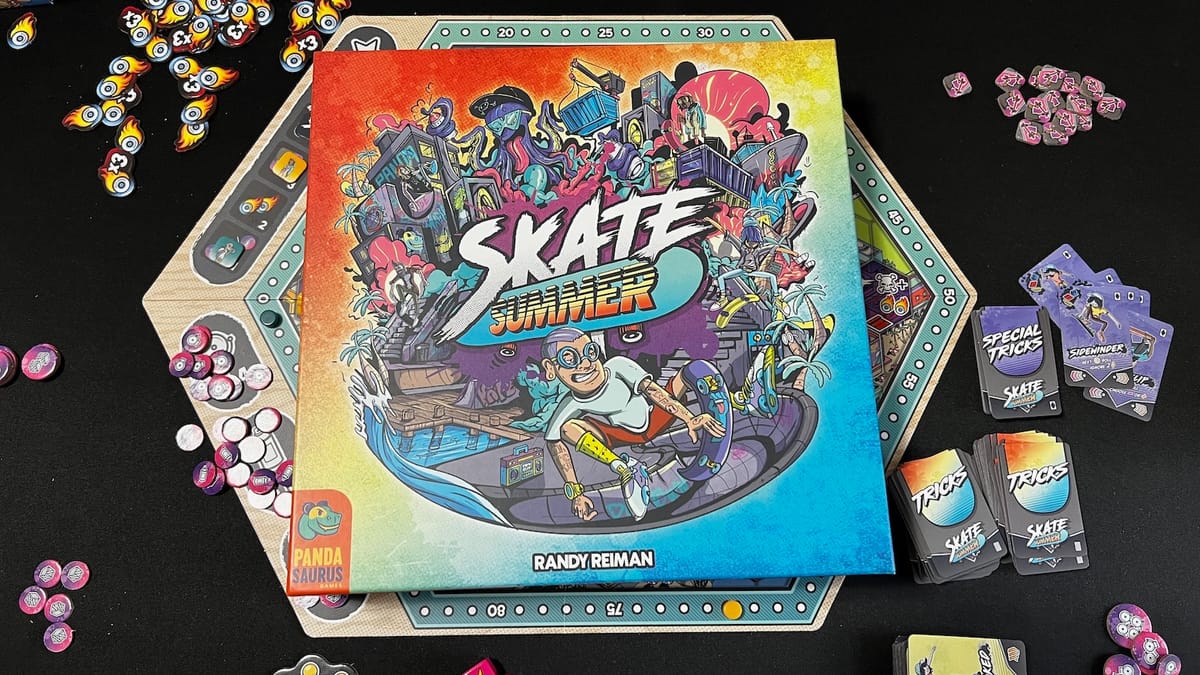
Growing up, I was never coordinated enough to skateboard. I couldn’t ever keep balanced on a board and after numerous falls and bandages, stuck to inline skates and bicycles. Luckily, I was able to plug in and play some Nintendo 64 to get my pro skater fix and the first feeling I got when picking up Skate Summer was nostalgia. After playing through the game a few times, I can say the nostalgic summer vibes are alive and well.
Skate Summer is the 2022 release from designer Randy Reiman and publisher Pandasaurus Games. In Skate Summer, 2-5 players will press their luck to play combinations of tricks and move their skater around Pelican Park collecting rewards, unlocking upgrades on their boards, and scoring points to be the ultimate pro skater.
GAMEPLAY
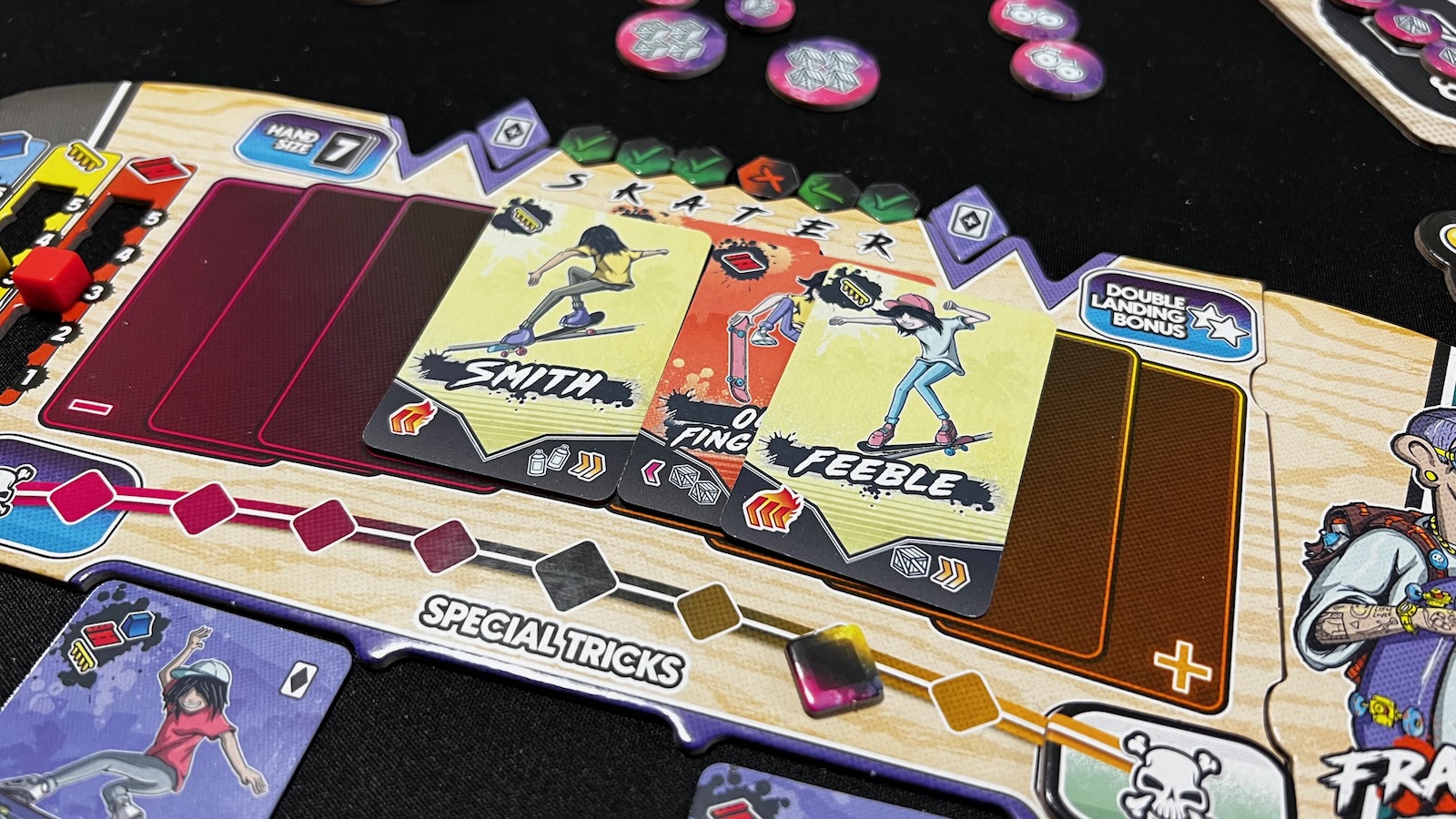
The game takes place over a course of rounds until one player passes the decided upon score limit which can be tailored for game length. Each round takes place in four phases:
- Combos
- Skills and Points
- Moves
- Round End
The bulk of the game takes place in the Combo phase. Players will have a hand of five cards, until they can upgrade it, and will play a card from their hand to their player board. Each card gives players a choice between left and right and identifies with a certain kind of trick. Players will choose whether to balance their trick left or right, move the balance tracker on the board the indicated number of spaces, and then collect any bonuses listed on the card. After each card is played, the Pro Skater (first player), will roll the balance dice, which can shift every player’s balance based on the number of lighting bolts rolled. Players can then continue to play cards or land their trick combo. Each time players play another card, another dice is added to the balance roll. If at any time, the balance marker moves onto one of the skulls on the player board, the player has to bail, losing resources and the last card they played.
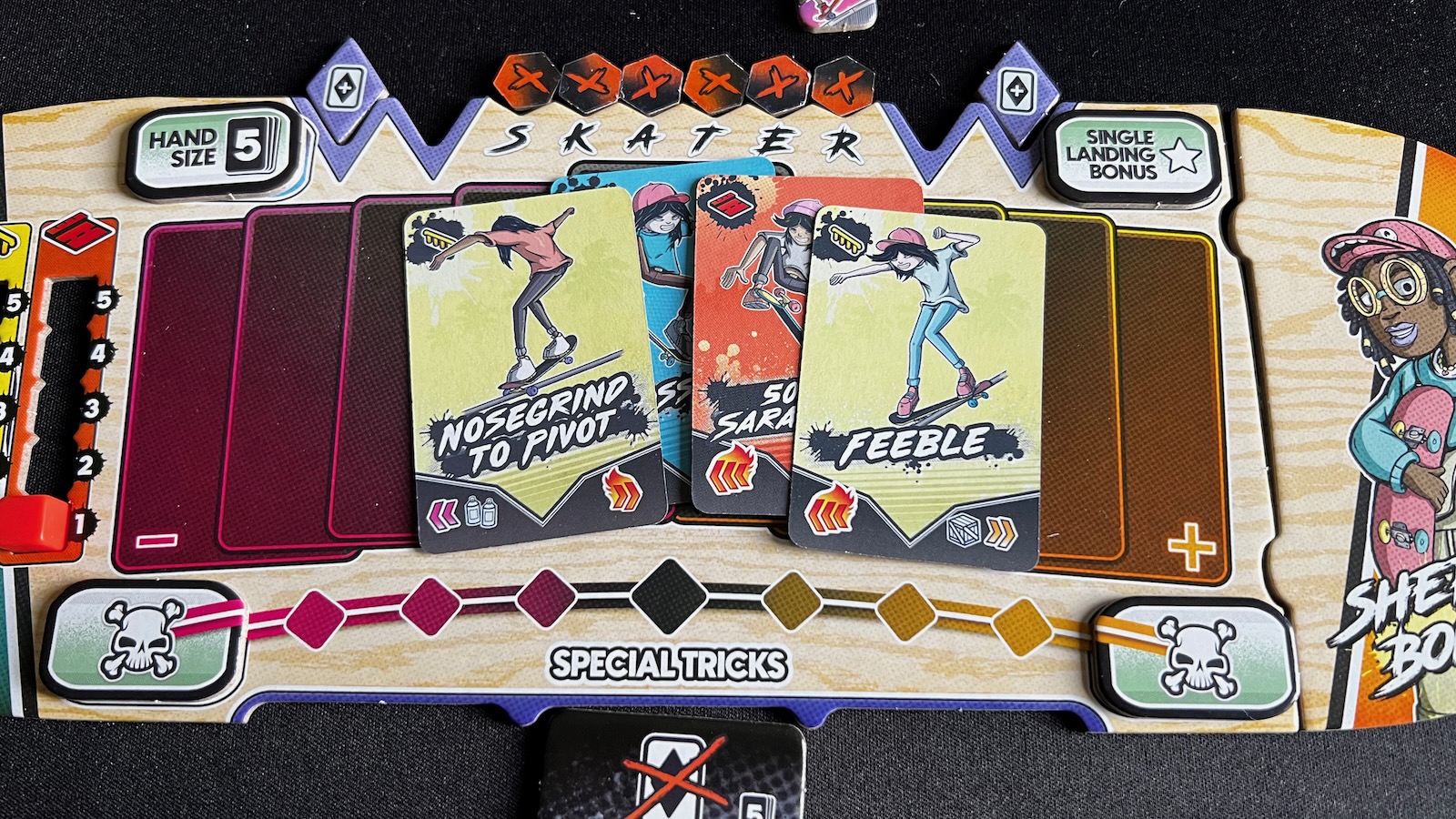
Players also have the opportunity to gain and play special tricks by playing cards to spots on their board or through various bonuses. These tricks, when drawn, are stored below the player board and can be carried over between rounds to be played at any time. The balance markers on these cards are determined by the player rather than what is printed and most give special scoring bonuses or allow players to alter the balance dice for the next roll.
When players decide to land their tricks, or if they bail, they place a marker on the landing track. This track gives players different bonuses, but also determines the order in which players move around the skate park in phase three. Bigger bonuses move the player later in the turn order. When everyone has bailed or landed, the round moves onto the next phase.
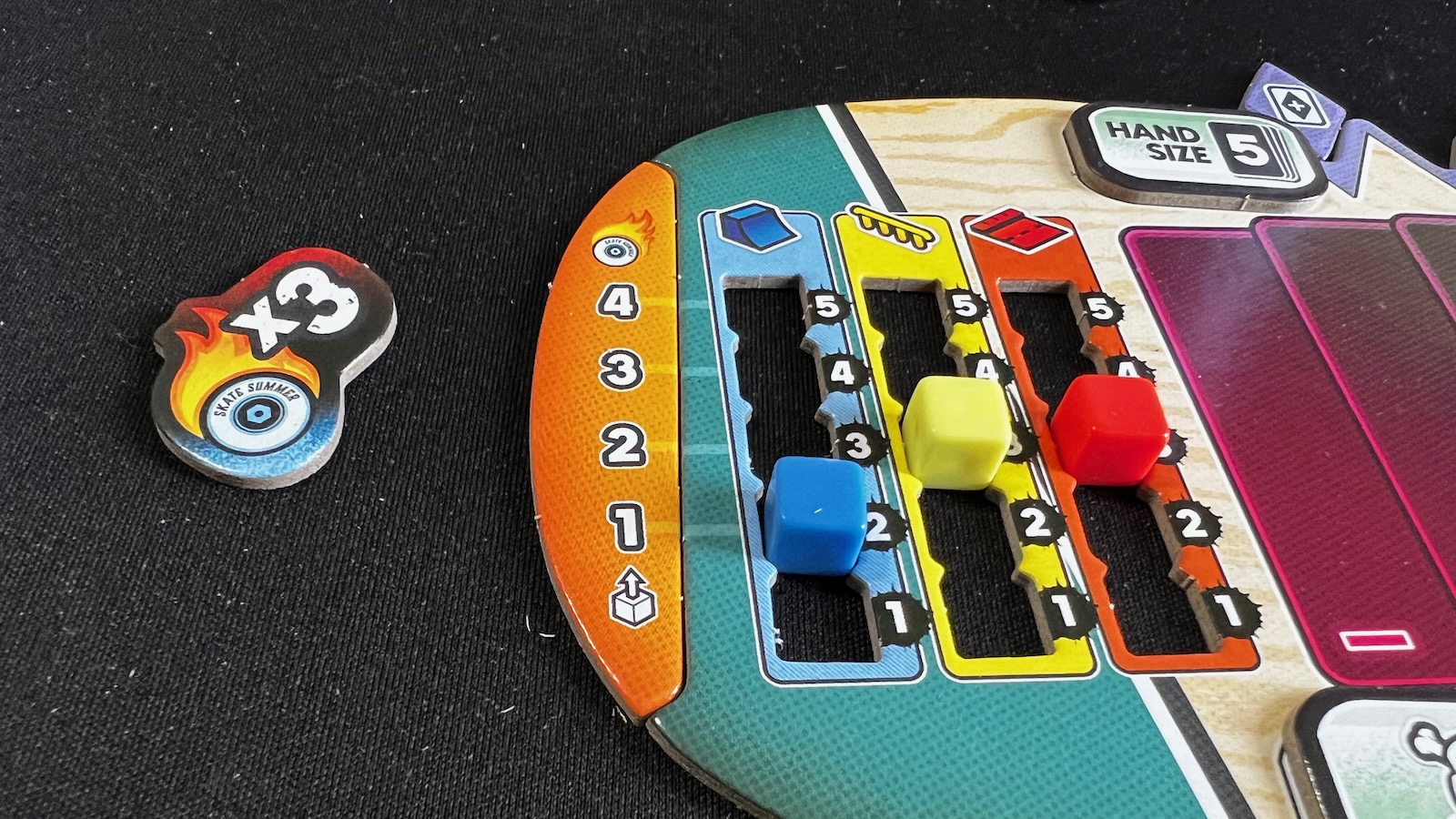
The second phase is called the Skills and Points phase. Players begin by spending flame tokens in their possession to level up their trick bonuses. Each progressive level costs more flame tokens, but scores the player more points when doing a trick of that style. Once players have made the decision to upgrade their skill tracks or not, the players will score their combos. Each trick in their combo is compared to the matching skill track and will score players that many points. Some special trick cards allow the player to score any of the tracks they would like, but also determines what type of card it will be during the next phase.
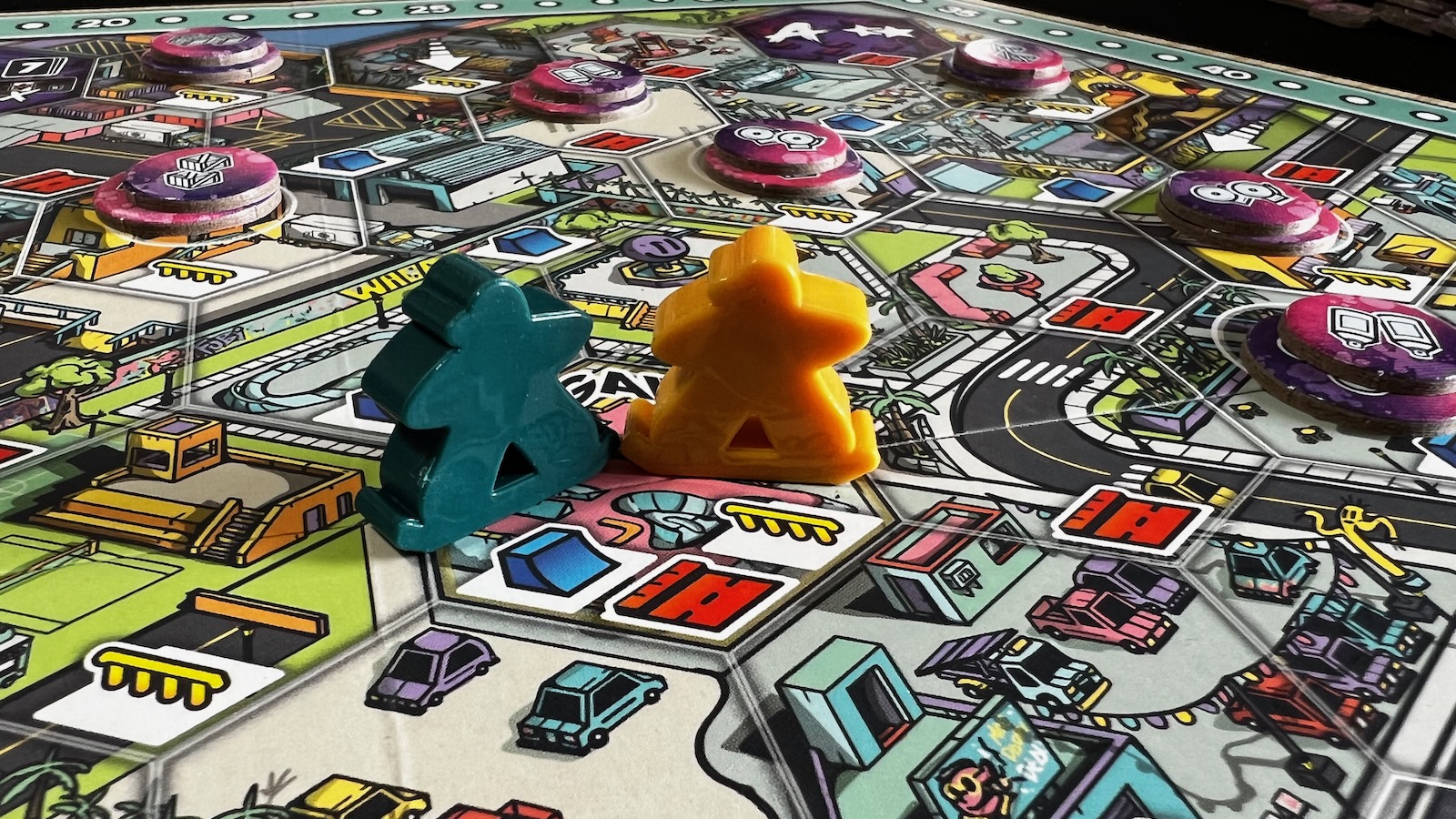
Phase three is called the Move phase, where players will move around the skate park and execute their combos on the variety of different spaces on the board. The board is surrounded with bonus tokens and six special spaces that allow players to upgrade their player boards. To move, players discard a trick from their combo and move into a space matching the symbol of the type of trick. While on a space, players can spend flame tokens to pick up bonus tokens from the board. Players will earn and discard manual tokens to help them move on the board when they don’t have a matching trick card for a space. A few spaces will help players make big moves across the board as well.
The special S-K-A-T-E-R spaces on the corners of the board allow players to upgrade their boards and make them more efficient skaters.
- “S” and “T” will unlock another space on either side of the balance track
- “K” will upgrade a player’s hand size from 5 to 7 and unlocks another special trick storage spot
- “A” will double the landing bonus a player scores when landing or bailing
- “E” reduces the prices to move up the skill tracks
- “R” moves in the special trick markers, making it easier to draw new special trick cards
If a player visits one of these spaces, they flip over a token on their board indicating the space and if they visit all of them before the game ends, they will receive a 10 point bonus during final scoring.
The final phase is a reset where players will retrieve landing markers, reset their balance tracks, draw up to their hand limit, and pass on the pro skater token to the next player.
The game ends when a player passes the marker on the scoring track and end game bonus scoring is applied. Throughout the game, players collect bonus tokens indicating a bell, a spray can, or a crate. The player with the most symbols in each of these groupings will get an extra 8 points with second place getting 4. The 10 points from the skater tiles is assessed and the player with the most points wins.
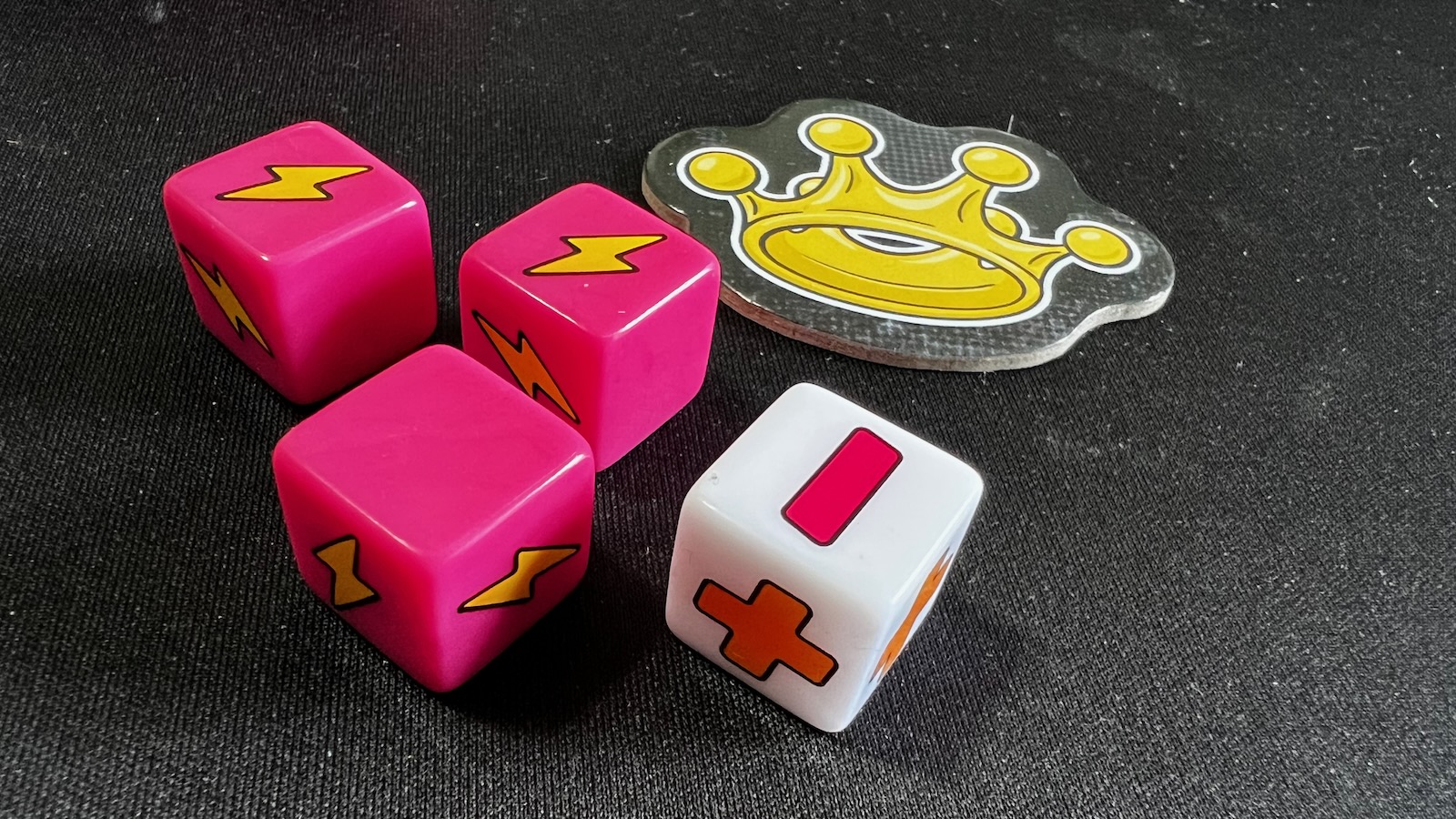
The game play for Skate Summer is pretty easy to pick up and falls to the light side of medium weight when it comes to difficulty. The game forces you to make decisions on what cards to play from your hand and which way to shift the balance marker. If you want to play more cards to your combo, you add more dice to the balance roll which could make you bail. The press-your-luck element adds some excitement and can make or break your turn depending on your choices. Another fun element are the flame tokens. With two different economies, players have to decide whether to raise their skill tracks or go for the bonus tokens on the board for some potential power ups and end game bonuses. The symbiotic relationship between the cards you play in your combo and the spaces you move to around the board almost give this game an element of programming. There are enough fun decisions in this game to appease the heavy-minded gamer needing a warm-up game and is a welcoming entry point for someone newer to the hobby.
COMPONENTS

The aesthetic of the game screams summer and fun. The bright rainbow color palette used throughout and the hand drawn lettering on most of the writing brings a sense of fun and energy to the art. Another great addition is the diversity in the types of characters included in the game, from the style, the skin tones, and the genders portrayed bringing another welcoming element to the game. The player boards have a unique feel and the upgradable elements really personalize the experience for each player. After choosing their character and color, different elements are added to each side for personalization. The dice included in the game are vibrant and easy to read and add a fun element to the combo phase. The rulebook is well laid out and gives some great step by step examples of gameplay and a back page quick reference guide that I’ve come to appreciate in my rulebooks.
Now the not so great. The cardboard used in the game for tokens is pretty thin and there are so many small pieces, I would be scared of losing something. The single goal tokens, the check marks, the balance tokens, and the special trick tokens are necessary for the game, but so small to manipulate and easy to misplace. The cards are also of a pretty poor quality. The mini cards are many and it is hard to shuffle them and tend to keep their bent shape when doing any kind of riffle shuffle. The board is also a bit busy. While shadowed by a white square, it is difficult to identify the space icon and even the lines between spaces. Combine the bonus tokens with the artwork on the board, and I feel like I’m playing a game of Where’s Waldo.
OVERALL IMPRESSIONS
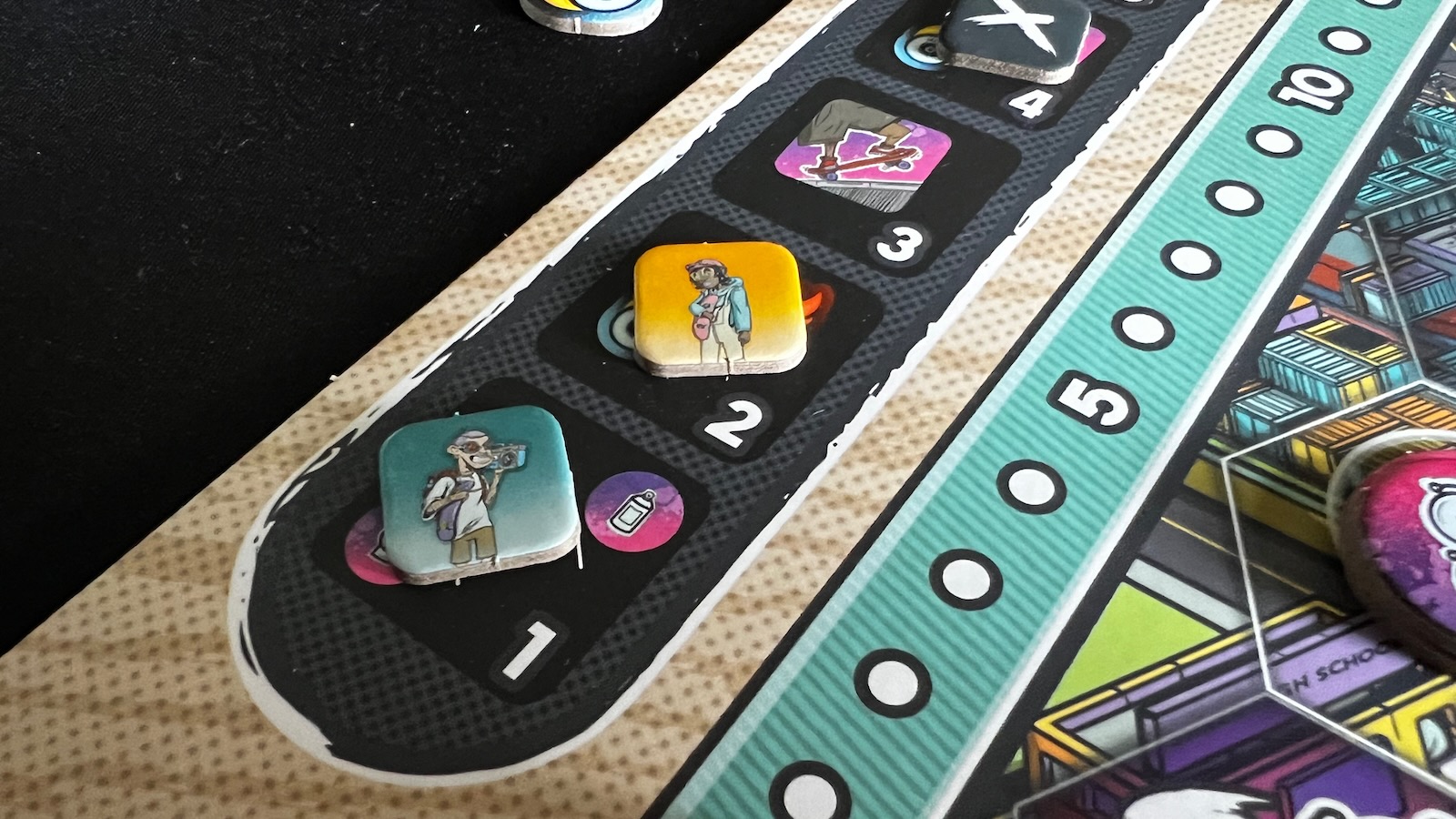
I had a lot of fun playing Skate Summer and was able to play it with a variety of different gaming groups with success. Each group grasped on to a different element of the gameplay experience, whether it was the fantastic and aesthetically pleasing artwork, the programming-esque combos, or just the nostalgia of getting a board out and getting outside in the park. This game is not something I would recommend for hard core gamers who need a euro experience; the dice rolls alone would haunt their dreams. This game is perfect for those looking for a medium to light strategy game that won’t take all evening and want a bit of strategy in their lives.
Skate Summer
Good
Skate Summer evokes a feeling of getting outside and moving around the park without the threat of broken arms and skinned knees (unless your game nights get a little rowdy). Plan your combos, keep your balance, and move around the park to upgrade your skills and gain bonuses.
Pros
- Beautiful, fun, and bright artwork and representation
- Some fun mechanics involving set collection and press your luck
- Some tense dice rolls when you’re on the verge of bailing on a big combo
Cons
- Tiny tokens that aren’t great for big fingers
- Cards are flimsy and don’t shuffle well
- Busy board giving off Where’s Waldo vibes
